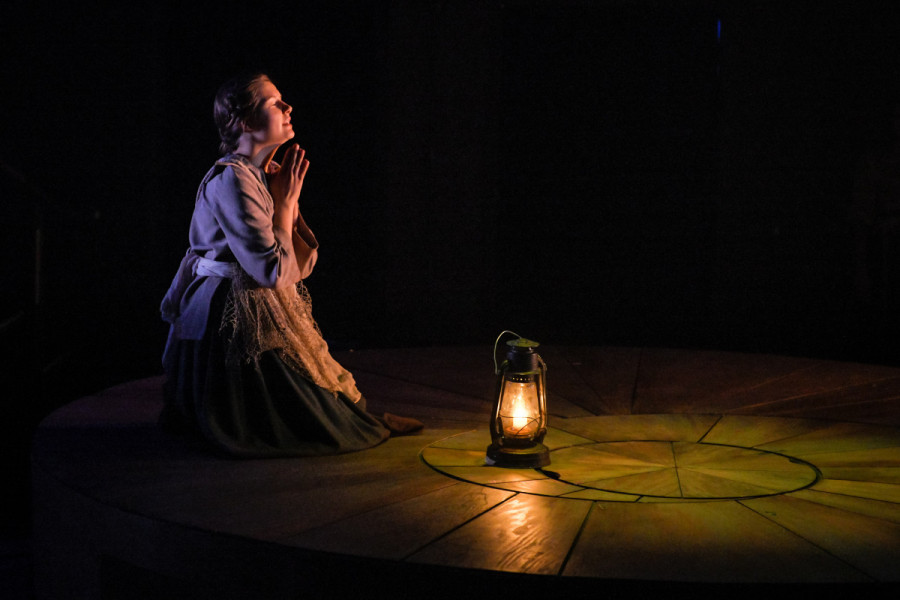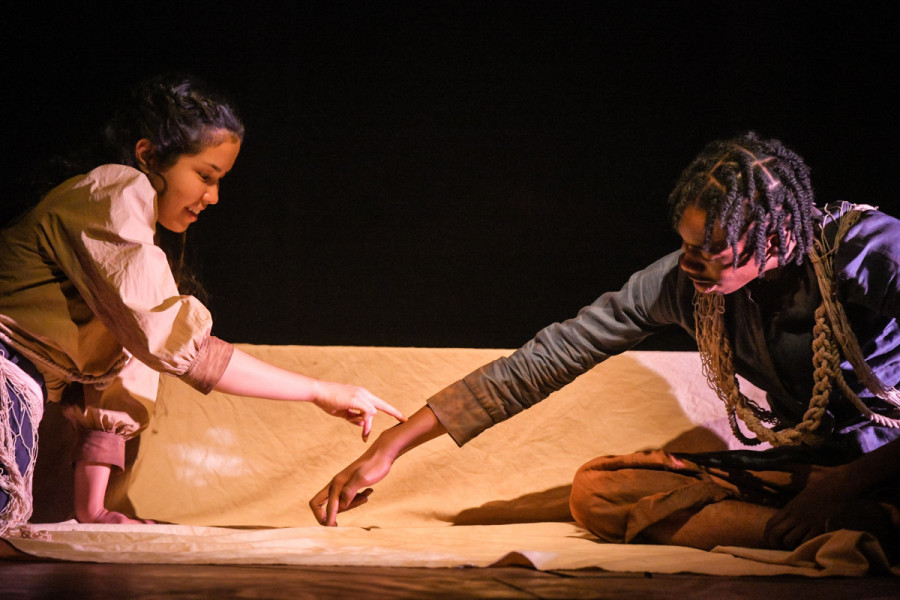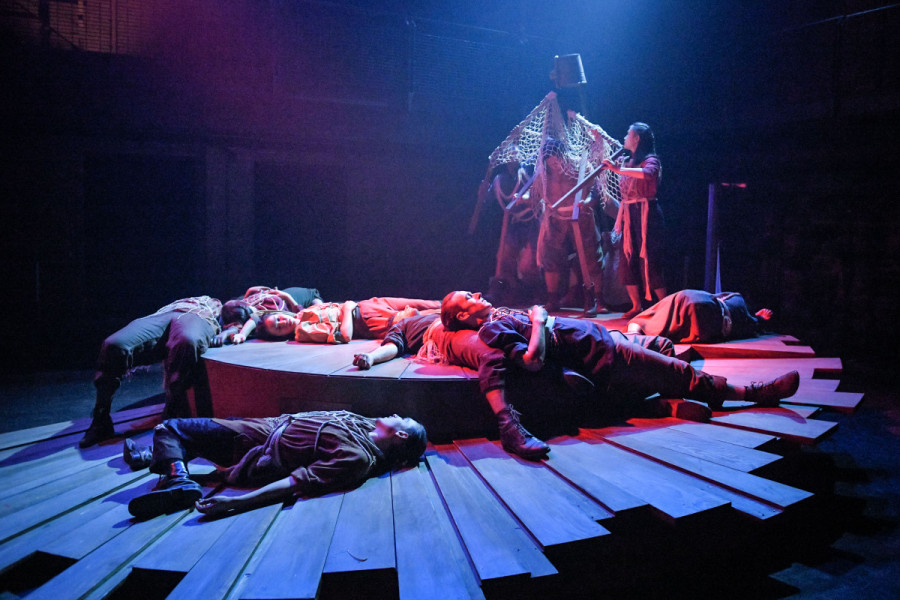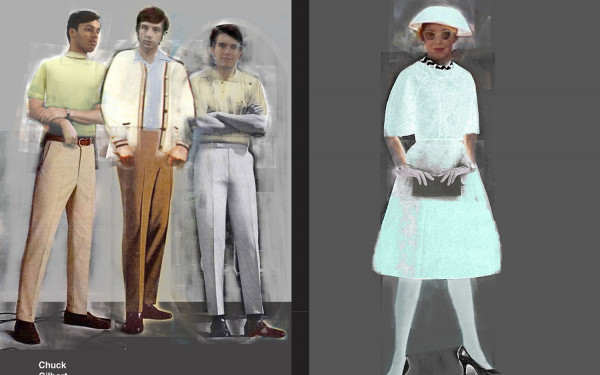Play ‘Indra’s Web’ Digs Into 14 Graduating NTS Students’ Ancestry
Made for Audience to “Get in There With Their Own Memories, Imagination, Life, and Personal Connections”
If you called your oldest family member today, and asked them to tell you a story about your ancestors, would you know what they would say?
That is precisely what 14 graduating students of the National Theater School were asked to do for the collective creation play Indra’s Web.
For the past three years said directors Arianna Bardesono and Zach Fraser, they worked with NTS’ acting, production design and technical arts, and set and costume design students.
“It is a feast for the eyes,” said Bardesono. “We worked in a way so that an audience member can really get in there with their own memories, imagination, life, and personal connections,” she said.
Indra’s Web kicks off as the actors stand around a spiral-shaped set inspired by the Fibonacci sequence.
They each state the city they are from, along with its appropriate land acknowledgment. Designed by Margarita Brodie, the set emulates the shape of a fossil, and acts as a symbolic vessel connecting the actors on stage to those that came before them.

The play is about the legacy of ancestors, most specifically about the students’ ancestors, made to align with a universal point of view.
The actors worked closely with Diane Roberts, founder of Arrivals Legacy Project, who helped define each of the actors’ ancestors’ stories in a spiritual, but mostly artistic point of view to embody them, said Bardesono.
The Arrivals Legacy Project helps artists explore their past through workshops and research to generate material and generational understanding.
The diversity amongst the actors allowed the rich set of narrations surrounding identity, family, colonialism, war, trauma, and healing.
Bardesono is a NTS graduate herself, and came up with the essence of the play with her co-director and husband, Fraser. Both were interested in the idea of the other, and realized that otherness may very well be inside of ourselves.
Related“We didn’t want to look at the contemporary. It was clear from the students that they didn’t want to have anything to do with social media or current political problems. And so, we decided to look back,” said Bardesono.
“We can better understand the world we live in if we look at those who came before us.”
“A lot of us were able to successfully lift some beautiful parts of our ancestry out of this research. Finding strength in my family despite trauma was a huge revelation.” — Todd Houseman
“We found so many stories and histories. For every moment you see in this play, there are like 14 moments. A lot is condensed to certain characters you see in the show,” said actress Espoir Akati Segbeaya.
Actor Ray Jacildo brings up the challenges of being an immigrant who tended to shy away from his parents’ culture, and how being part of the production paved a way for self-discovery.
“This was very big delving into who I am and who my family is,” said Jacildo.
“It opened up a huge world. Not only unlocking an acceptance of that but also learning things about my mother, my father and their parents, that I’ve never known before, whose stories would’ve been lost if I had never asked,” he added.
Exploring intergenerational trauma is draining. Actor Todd Houseman highlighted the importance of resilience, and how rewarding the ancestry work behind the production was for him.
Related“A lot of us were able to successfully lift some beautiful parts of our ancestry out of this research. Finding strength in my family despite trauma was a huge revelation,” said Houseman.
In other cases, actors also found an opportunity to gain an independence by “closing the doors” on their family, or parts of their family they don’t associate with, explained Segbeaya.

Serious resistance has come up, whether it was from the actors or their family members, and the creative process behind the piece was much harder and more intense than play itself, explained actress Erin Mackey.
For Bardesono, the challenge was to find a unified voice for the 14 individuals involved.
“You want to give everyone the space and chance to express themselves. The show found a real balance between how much we need each other […] and how much our personal voice is important in the world,” she said.
The compelling mix of dance, puppetry, shadow-theater, and more, encourages viewers to find out about their own ancestral roots, whether it is about reconnecting or letting go.
Indra’s Web is playing at the Monument National between Oct. 21 and 26. Tickets are Pay-What-You-Think and booked through Monument-National’s Box Office.



_600_832_s.png)

